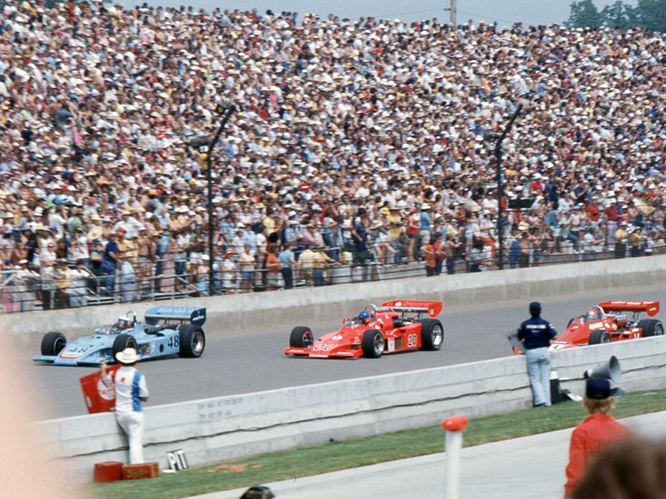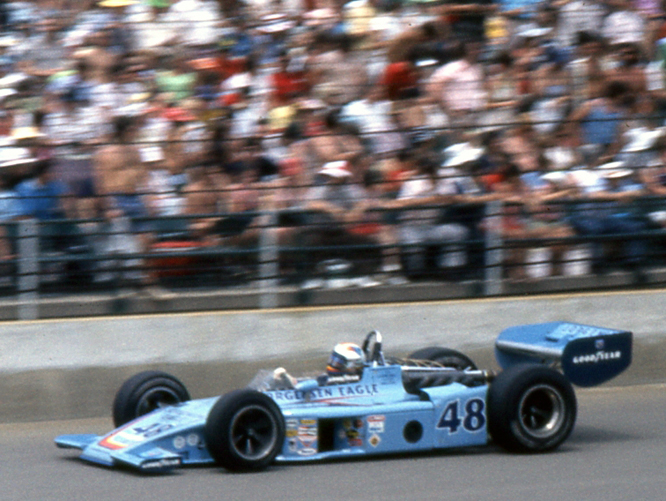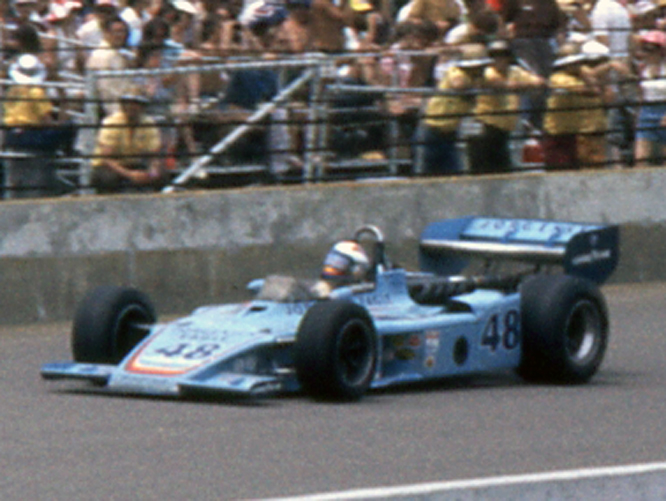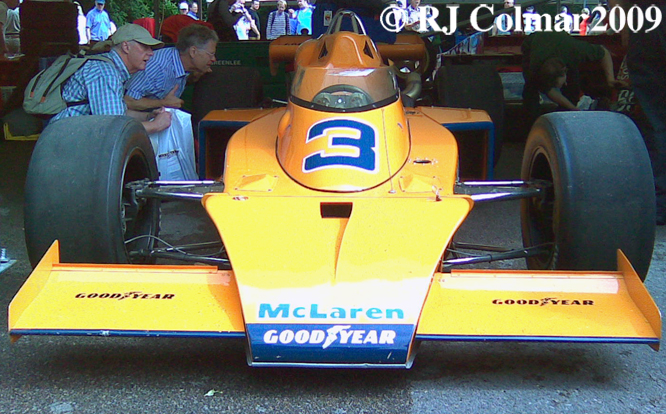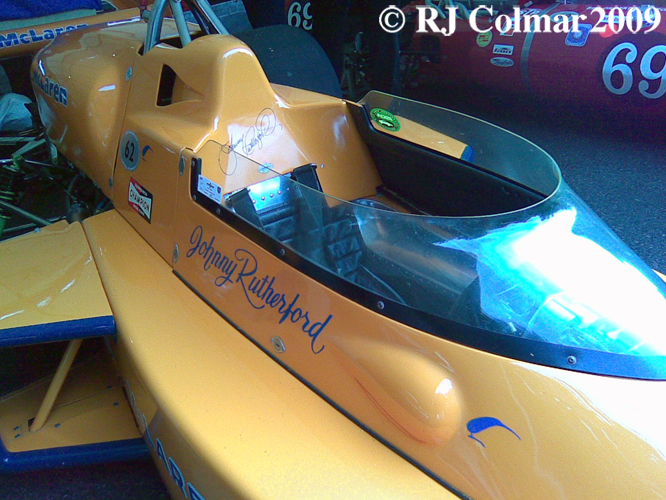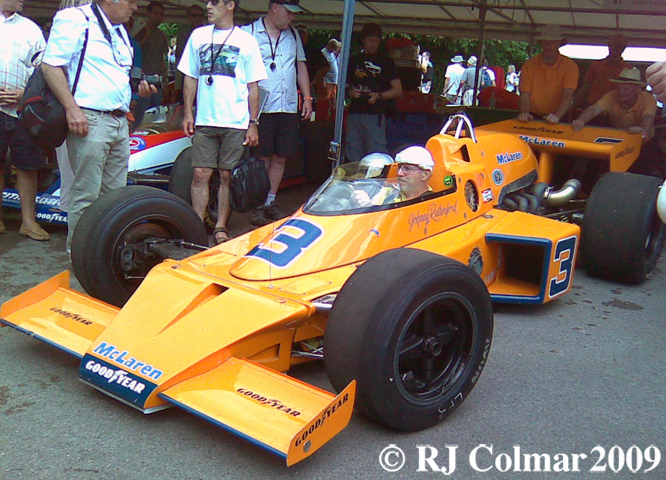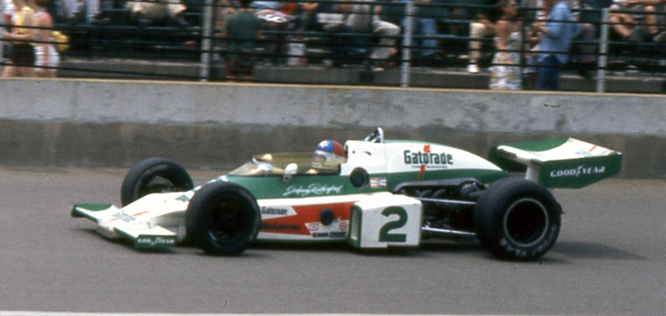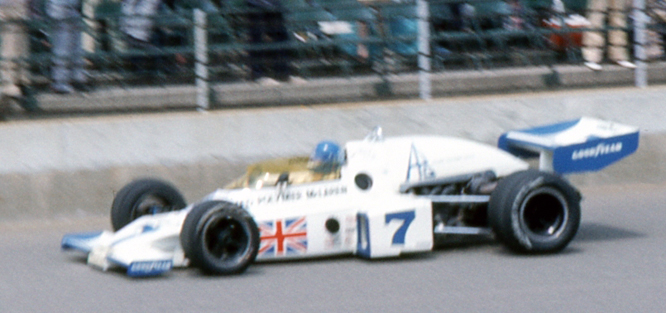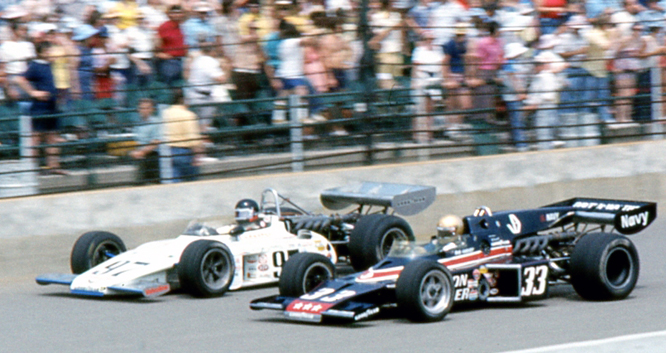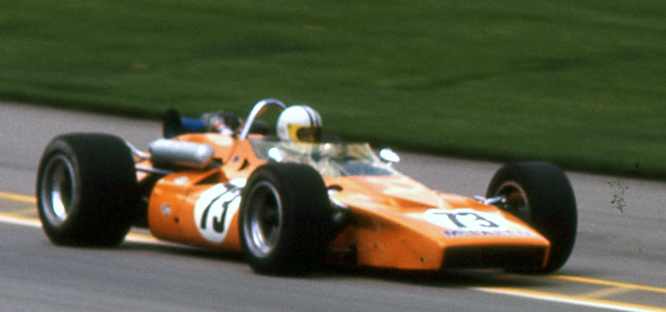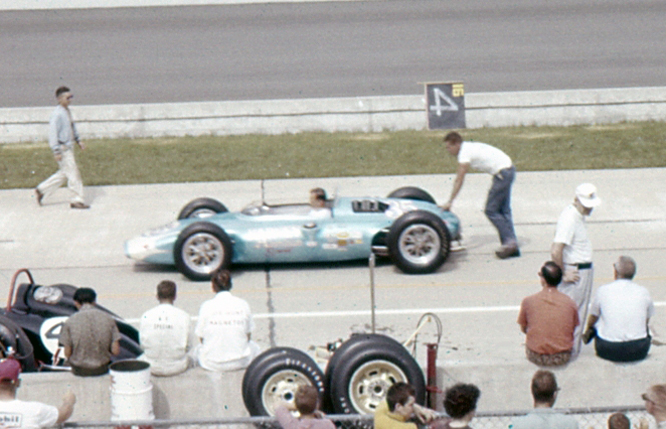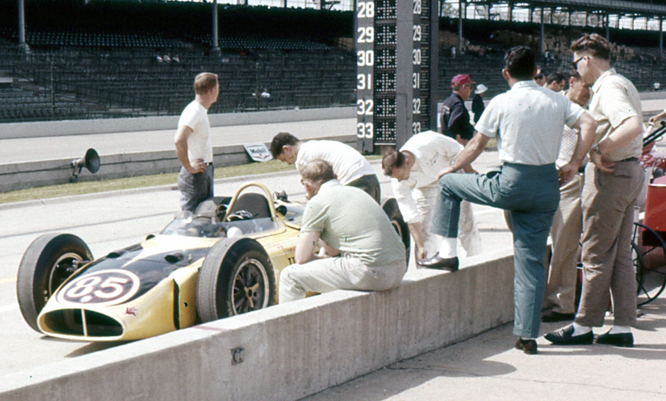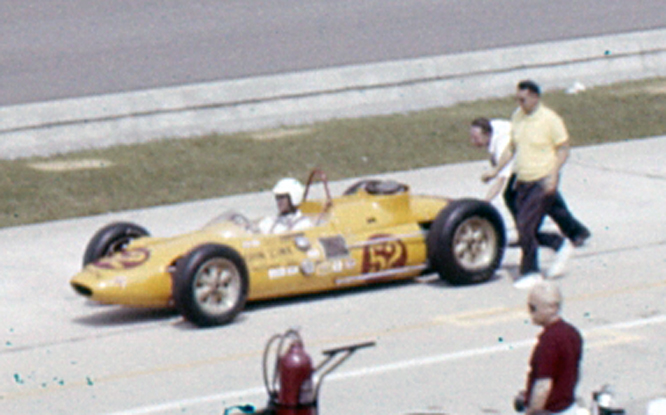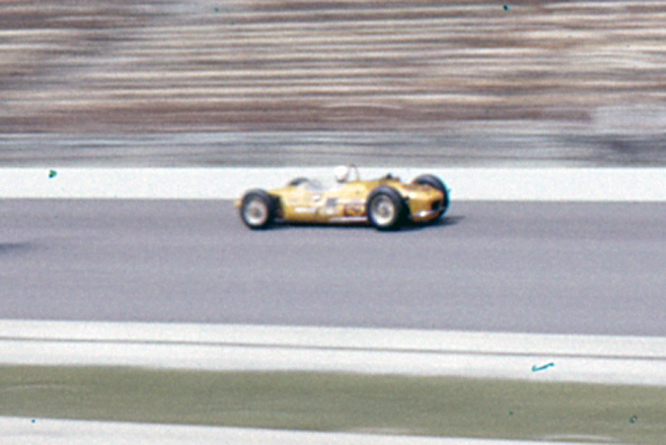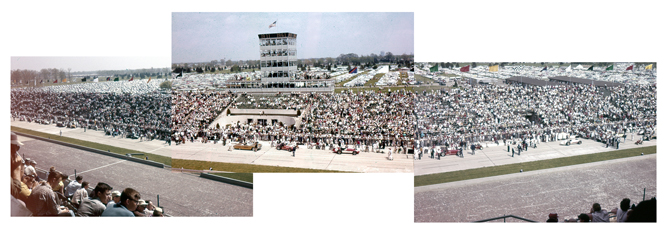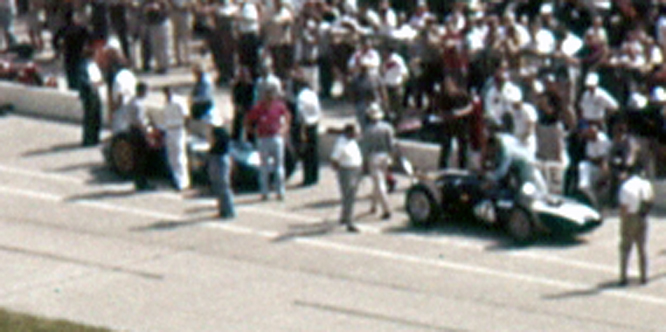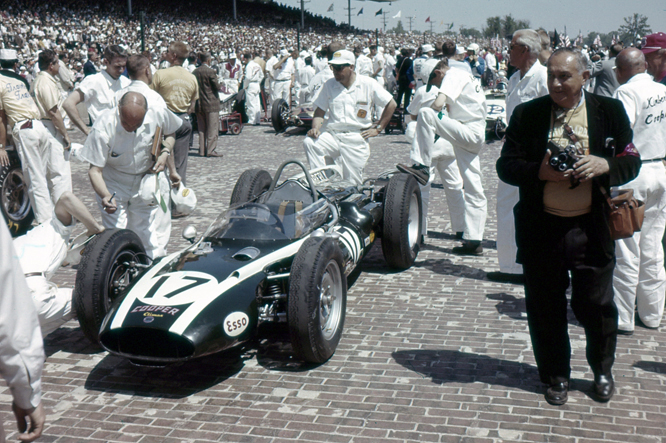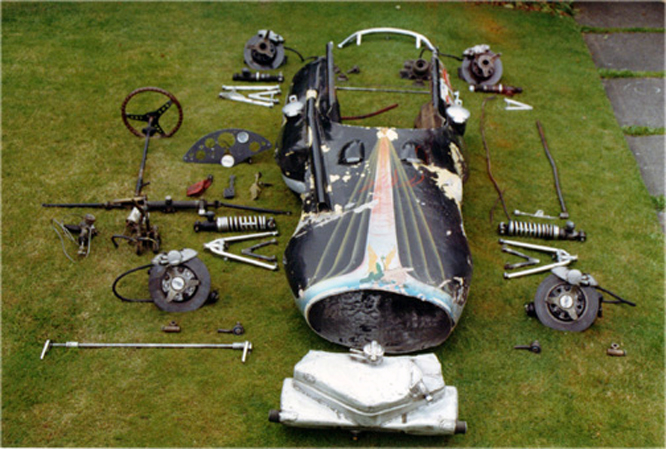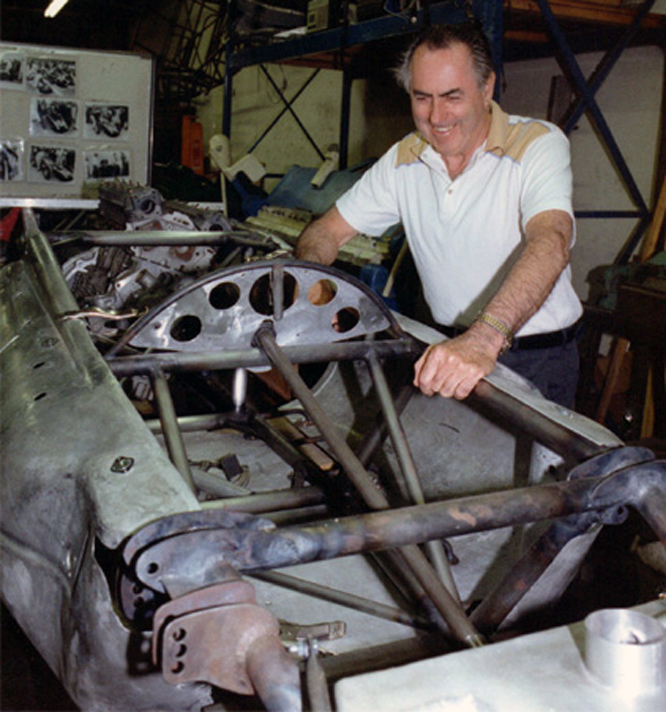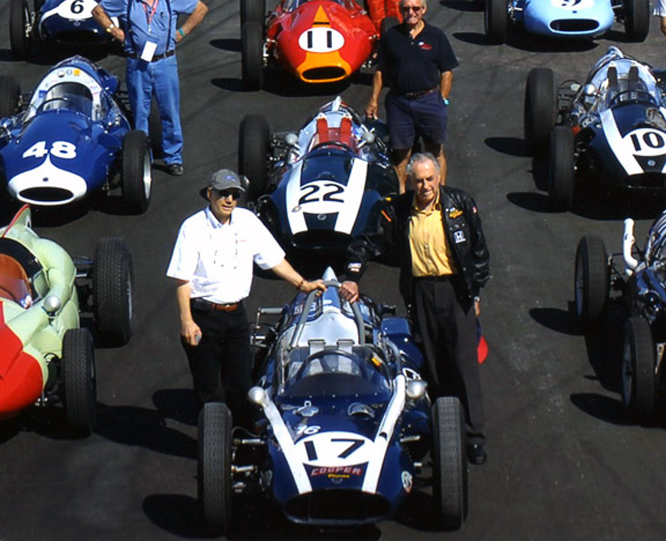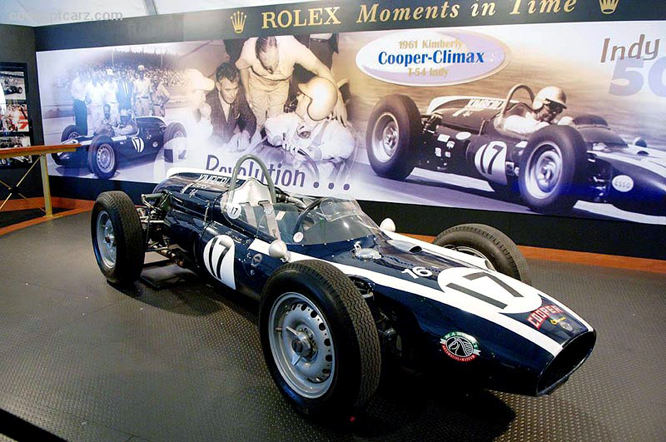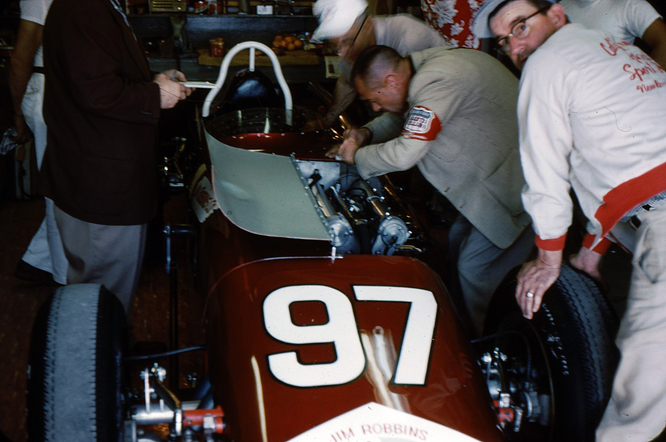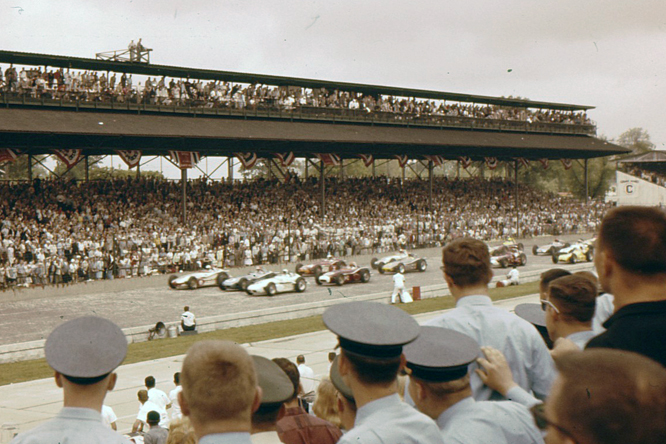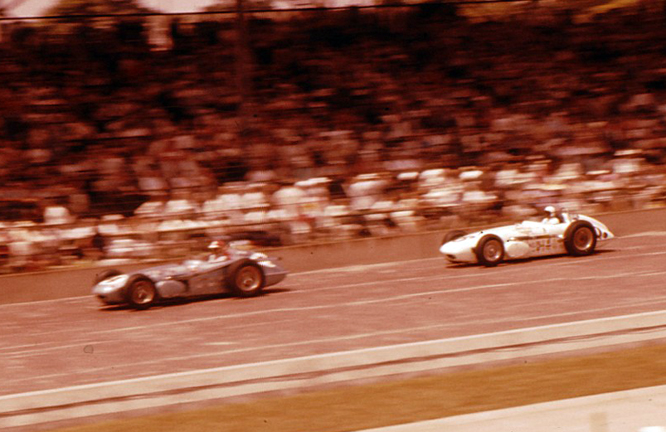As I mentioned yesterday the 1975 Indianapolis was won by Bobby Unser and today thanks to photo’s by Ed Arnaudin we can have a look at the #48 Eagle Offy 7400 driven by Bobby Unser, seen starting on the outside of the front row with #20 Gordon Johncock and #14 AJ Foyt on pole, that was declared the winner after 174 of the scheduled 200 laps.
All American Racers which manufactured Eagle racing cars was set up initially by Dan Gurney and Carroll Shelby to tackle the World Championship Grand Prix circuit and the US Champ Car and Sportscar circuits in 1964.
In 1967 Dan Gurney won the Belgian Grand Prix in an Eagle Weslake Mk 1, also known as T1G, run by the firms UK based satellite team known as Anglo American Racers. The following year Bobby Unser won the Indy 500 in an Eagle chassis.
Upon retiring from the cockpit Dan Gurney bought Shelby out and in 1973 Gordon Johncock in an Eagle run by Pat Patrick was declared winner of the tragic rain shortened race, in which his team mate Swede Savage suffered injuries from which he would later die and a member of his pit crew was fatally struck in pit road by a fire truck going the wrong way down pit road to attend to the Savage incident.
By 1975 McLaren also with two Indy 500 wins were regularly challenging Eagle for overall supremacy on the USAC Champcar Circuit and this would prove to be the third and final Indy 500 victory for the Eagle marque.
It transpires that the Eagle chassis type numbering system is worthy of a large dense volume all of it’s own, however to the best of my knowledge the winning car that Bobby Unser car drove is a type 7400, if a chassis number becomes known to me I’ll add it below.
Bobby Unser is part of one US Racing’s elite families, he and his younger brother Al Snr competed on the Champ Car circuit in the 1960’s, 70’s and 80’s.
Bobby known as the ‘undisputed King of Pikes Peak’, counts among his many success 13 Pikes Peak hill climb victories, 8 of them in a ten year period, the ’68 and ’74 USAC Champ Car championships, along with his Indy 500 wins of ’68, ’75 and ’81.
In 1968 Bobby participated in two Grand Prix for BRM, after qualifying for the Italian Grand Prix he flew back to the United States and took part in the Hoosier 100 at Indianapolis, upon his return to Monza with fellow Italian GP qualifier Andretti, they were told that the rules forbade drivers to participate in 2 races less than 24 hours apart.
In 1975 Bobby also won the IROC championship to confirm his all round versatility.
Hope you have enjoyed today’s All American Racers edition of getting a lil’ psycho on tyres, and that you will join me again tomorrow. Don’t forget to come back now !

